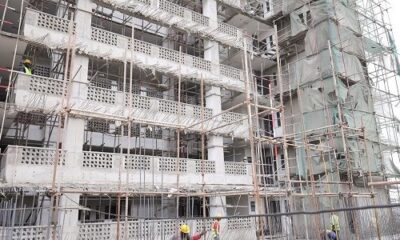A few weeks ago, my old-time friend and teacher, the principal of Maranda High School, called me to deliver the Principal’s Talk on Saturday at 7am. When I asked how many learners would be listening to me, I was taken aback when he said 2,441.
The principal has four deputies and more than 100 teachers, 31 of them employees of the Board of Management. He has ingeniously installed a public address system for communication with learners.
Look around: The allure of Mang’u, Precious Blood Kilungi, Ortum Boys, Kakamega High and Alliance is all gone. Schools have been turned into marketplaces and learners are crammed like sardines in the classrooms and dormitories.
For the past decade and a half, we have faithfully been increasing numbers. With Free Primary Education, the sector did not follow through the sector-wide approach to planning suggested in Sessional Paper No. 5 of 2005.
Planners in the sector and the National Treasury saw no need to plan for the long term. All sector strategies are medium-term and under-resourced.
While marking the World Anti-Corruption Day on December 9, 2012, then-UN secretary-general Ban Ki-moon said: “The cost of corruption is measured not just in the billions of dollars of squandered or stolen government resources but, most poignantly, in the absence of the hospitals, schools, clean water, roads and bridges that might have been built with that money and would have, certainly, changed the fortunes of families and communities.”
We have institutionalised corruption; and, with that, we are killing generations. It is frustrating as a parent when it becomes clear as day and night that your child is likely going to receive an education that is inferior to what you received more than three decades ago.
The emerging middle class is the hardest-hit group — they grew up with the notion that education changes everything through making economic opportunities available.
Now, they pay taxes for the public education system but take their children to private schools since quality is compromised in the former. The same situation obtains in the health sector.
‘The system’ has them cornered and public education is increasingly being privatised and some public schools are being managed like businesses, where fees paying, benchmarking trips and the attendant costs are the norm.
Parents are beginning to take their children out of the once-prestigious national schools to the emerging spaces in the international schools.
The public education space is quickly being privatised. To confirm this assertion, see that the government is doing through the Higher Education Loans Board in financing learners in private universities since the public institutions lack basic resources to deliver on their mandate of knowledge creation and research.
The ongoing curriculum reform reeks of private business interests. Publishers and booksellers want a piece of the pie and talk of stepping back to audit the process is met with great resistance and disdain.
But how did we fail to prepare a sector ‘Marshal Plan’ with the declaration of FPE in 2003? Did we expect miracles to happen?
Mr Wesaya is an education and strategy consultant at Tathmini Consulting. [email protected] tathminiconsulting.com

 General News3 days ago
General News3 days ago
 General News4 days ago
General News4 days ago
 General News3 days ago
General News3 days ago
 General News2 days ago
General News2 days ago
 General News2 days ago
General News2 days ago
 General News1 day ago
General News1 day ago

